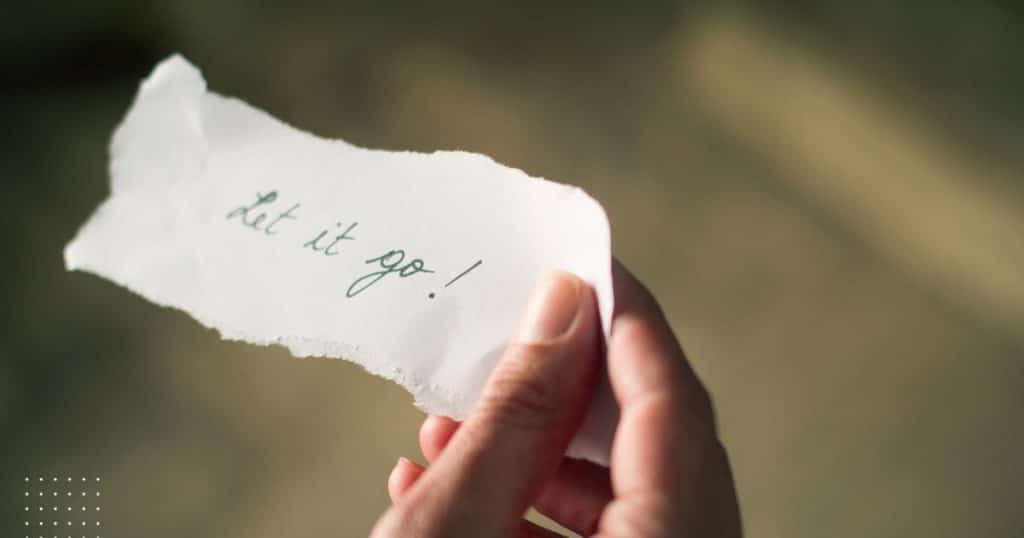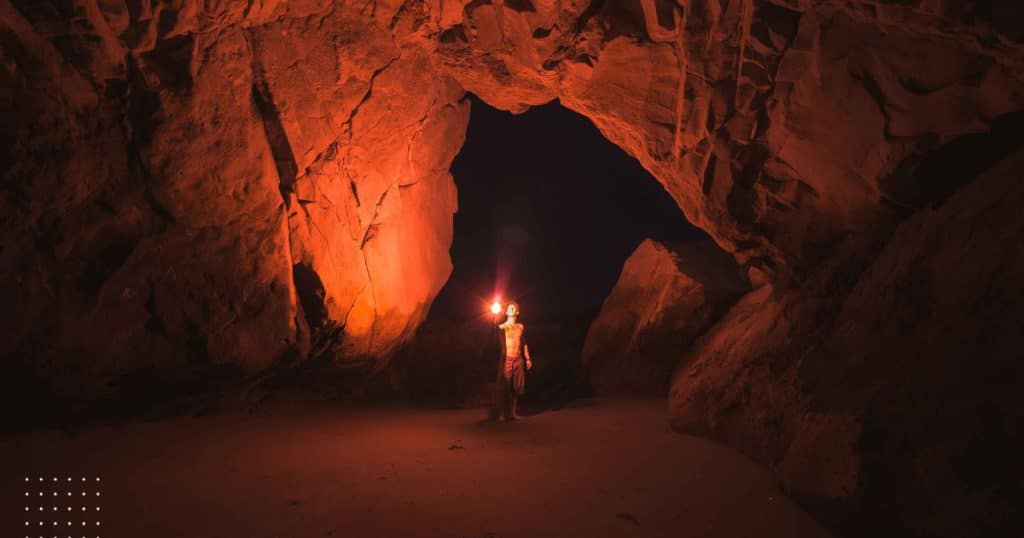
The Essential Secrets Aspiring Entrepreneur Must Know About Starting a Business
Dreaming of starting your own business? Read this article to get a realistic view of what it takes before diving in! Managing expectations is key!

Certified High-Performance coach, speaker, author, husband, adventurer, former commando-paratrooper, and tsunami survivor.
Life is not a fairytale; the reality is that it can be unfair and brutal. Natural disasters, wars, accidents, inequalities, I mean, it’s tough out there! And in our quest to find happiness, we must learn to let go of what we can’t control. The problem is that we believe that things should be the way we want, and if it doesn’t, we think something is wrong, so we end up fighting with our individual will against the inevitability of life. I’m sorry, but life will throw some difficult situations that will challenge your resilience. Better be equipped to face adversity when it comes! In this article, you will learn why surrender is not a sign of weakness but a gateway to immense strength and peace. You will develop practical strategies to face the unpredictable nature of life with courage and grace and gain tools to transform the inevitable pain of life into opportunities for growth, resilience, and profound self-discovery.
In a world that often feels chaotic and demanding, the ability to surrender becomes a life-changing skill. It’s about reclaiming your peace, joy, and mental clarity. By learning to let go, you free yourself from the constant anxiety of trying to control every outcome. It transforms how you relate to others, building healthier, more profound connections with the people around you.
Life’s challenges become manageable when you embrace surrender. Instead of feeling defeated, you find strength in surrender, allowing you to bounce back from setbacks with resilience. Letting go of rigid control opens your mind to creative possibilities.
Life is too precious to be spent in constant struggle. By mastering the art of letting go, you’ll find the freedom you’ve been seeking – freedom from fear, stress, and the never-ending quest for control. Let’s go!
This article addresses one of the key topics featured in the no-bullshit guide to creating success and fulfillment in life and business, where you’ll uncover the 3-part formula to design and live a more rewarding life. It may sound too good to be true, but it’s a system that actually works. If you haven’t read it yet, I highly recommend that you do so now to gain a better understanding of what it takes to reach excellence. Additionally, you can read the 4 steps to reach excellence and learn a methodology you can apply to any subject to speed up your progress.

In the military, I learned never to surrender or give up. Never surrender was literally the motto of my company. This shaped my mindset and gave me so much strength and resilience. But some battles are not worth fighting, especially when we fight things we cannot change.
First, let’s see what it means to surrender. The definition is “to cease resistance to an enemy or opponent and submit to their authority.”
In terms of military operations, when you surrender, you stop fighting, give yourself up to the enemy, and hopefully will not be killed or tortured. Not ideal…But I guess you’re not here for a course on strategic warfare.
When reflecting on how surrendering applies to our daily lives, I thought we first need to define the word “opponent.” Here is the definition: “someone who competes against”
Would you play a game against a child? With your partner? A friend?
Yeah, chances of success are low or high, but in an acceptable range.
Now, would you play a game against Nature? Cosmic events? Super intelligent Ai? Or time?
NO! Because there would be a 100% chance of defeat! Yet, we are fighting life and what is. And we put a lot of energy and thought into this lost battle. We won’t surrender! We resist life, and it does not really create happiness.
Here is a major distinction:
Surrender comes with a feeling of peace and relief.
Giving up is when you lose hope, and there is a general feeling of defeat.
Surrendering does not imply defeat or weakness; it is about letting go of control in a way that opens doors to freedom and inner peace. It’s the act of releasing our grip on situations, emotions, and outcomes that are beyond our control.
Look, we all seek to influence our lives positively, but there comes a point when our desire for control starts causing more stress and resistance than growth. The paradox here is that the more we try to have control, the slower the progress and the lower our happiness.
Let’s stop doing that and learn the art of letting go!
Before reading further, I invite you to write down why you decided to read this article. Why is learning to let go is relevant for you at this moment of your life?
Most of our problems come from our past and future, but we experience them all in the present. Let’s look first at the future.
As much as we want to believe, we can’t escape three things in life: pain, uncertainty, and constant effort. If you look at your past, you experienced those three things over and over again. And, sorry to say, but it’s not over yet! I know it doesn’t sound very optimistic.
We love what is familiar and certain and absolutely hate what we can’t predict. It is just the nature of the human mind. Our mind constantly creates meaning, finding cause and effect for everything, so we feel like we stay in control. But in reality, we can’t control much. The only things we really control are our actions and our thoughts (well, not always!).
People try to create a sense of security and certainty (follow the norms, do like everybody else) because it makes them feel like they can predict the future (knowing where they’ll live, the job they’ll have, etc.). Predicting the future makes us feel safe. But that’s just an illusion.
Our world is constantly changing with new technologies emerging, climate change affecting our planet, stock markets fluctuating, recessions occurring, government bodies implementing sudden restrictive rules, wars breaking out, banks crashing, etc.
I mean, what is certain in your life?
Not your job. Not the worth of your savings. Not even waking up again tomorrow…
We fear future pain, so when faced with uncertainty, people may try to control situations as a way to create a sense of predictability and stability in their lives. The problem is not the unpredictability of life; it is the future-oriented fear response we create based on our negative past experiences.
Control can provide a false sense of security. People might believe that, by having control, they can prevent negative outcomes or protect themselves from potential harm. But it is a fantasy; you will never get rid of pain, uncertainty, and constant effort.
Can you list at least five things you try to control at the moment?
OK, Who is a control freak? I sure am.
Here is what I can control:
Here is what I cannot control:
I can influence some things, but the outcome is out of my control. Accepting the unpredictability of life brings a sense of freedom. Do you agree?
So why do you keep trying to control things out of your control zone?
We tend to over-control as a coping mechanism because it provides a distraction from deeper emotional issues. Or it might come from past experiences; we try to control future situations to avoid similar pain.
True happiness is not when you have no problems anymore but when you enjoy solving them because you choose them carefully. Look at mountaineering, for example; people find joy in the pain, the uncertainty of surviving, and the tremendous effort it takes to summit a mountain. The same goes for everything: learning a language, being in a romantic relationship, playing an instrument, etc. Your level of happiness in life is directly correlated with how much you enjoy the process. And the process I am talking about here, is life.
I keep challenging my clients about the goals they are pursuing to make sure that they enjoy “getting there” even more than “being there.” So, if you create a life aligned with your higher self, where you hold yourself to your highest standard and fully express your creativity and uniqueness, it is all worth it. If you are living out of alignment, of course, your problems feel like a terrible burden.
You can only change the context in which you experience your problems. They will fundamentally stay the same, no matter what; you can’t completely remove them from your life.
So work on creating more alignment and then decide to trust life to give you precisely what you need, even though it is not always what you want.
My idea of the future completely collapsed a few years ago. I always wanted to be a father; it was always part of who I would be. But after five years of struggling with unexplained infertility, we had to make peace with the fact that this reality will most likely never happen. It was devastating; it affected our relationship, and we struggled individually and together.
Our identity was rewritten, and we had to find meaning in it. I didn’t lose anything, and nobody died, but I lost an idea of self, a desire, a dream. And I had to grieve that part of me that would never exist. I had to let go and accept a different future.
Our reality is determined mainly by what we choose to focus on. And there is always a choice. My wife and I choose to make the most of what we have. That doesn’t take the pain away, but feeling miserable and sorry for ourselves certainly would not make our lives better anyway.
As a nomad for the past seven years, my life is nothing more than a journey of uncertainty and discovery. I don’t know where I’ll be a month from now; with each new country, I need to find out where I’ll stay, what food will be available, make new friends, adapt to another culture, etc. And to add to the mix, being an entrepreneur: it’s like constantly riding the roller coaster of uncertainty! Here is what I realized: We all have an incredible ability to figure things out.
How we navigate uncertainty and unpredictability solely depends on how we think. I believe I’ll always find a way, and guess what? I always did.
What belief do you have about yourself when navigating the unknown? Life is a journey in the unknown! As much as we try to create a sense of control, the only thing we truly control is our reaction to what life throws at us. Whatever you are going through, you are just one thought away to navigate it with grace.

We looked at what might go wrong tomorrow; let’s now dive into the impact of what went wrong yesterday. As I said, we can’t escape three things in life: pain, uncertainty, and effort.
Have you ever been heartbroken? Have you ever hurt yourself by falling, or in an accident, etc? Have you ever been hurt by someone?
The answer is most likely yes. Do you still suffer from those things today? Well, most likely not.
The pain we experienced in the past is creating suffering in the present only if we don’t accept it. Pain is an unpleasant sensation. It can be physical, emotional, or both. It is a signal from the body, alerting us that something is wrong, like a built-in alarm system. Thanks to the pain signal, we know when to adjust our actions. Without pain, we would die with no warning!
We usually don’t enjoy it when our alarm system is triggered. We don’t want pain, and most of the time, we refuse to accept it. Every time we do so, we create suffering (non-acceptance of the pain). Pain is neither good nor bad. It is just a notification, a message.
You experienced pain in the past, and you will experience pain again in the future. You can’t avoid it. Suffering is what you do with that pain. It appears when you are overly focused on how the pain makes you feel.
The danger is to ignore the pain (the signal) and stay stuck in our experience of the pain. It is about how we experience the pain that will create sadness, anger, frustration, depression, etc. Suffering is a state of being; it is optional.
Deciding not to suffer doesn’t mean there was no pain at the beginning. It doesn’t mean that the pain is ignored. It simply means that we decided not to let the pain we experienced in the past define how we will feel in the future. Choosing to be a victim is dangerous because you soon become your story and let the pain define who you are. The more you make this situation familiar, the more you are likely to stay stuck with it.
What happened, happened; there is no way to change the past. The difficulty lies in our acceptance. Pain comes from a change in your reality—a change you don’t want. We don’t like change. But life is a long transition: we must accept change as a natural part of life rather than resisting it.
What change in your life do you need to acknowledge and accept that you can’t change?
Here is a powerful exercise:
Take your journal and think about five challenges or hardships you’ve experienced in your life.
– Why did you label those events “bad” in the first place?
– How did you experience the pain?
Ok, now reflect on the following:
Lats part, let’s change the script:
How many times in your life has something “bad” happened that then turned into a blessing? Look at what you wrote and notice the growth that came with it.
I nearly died in a tsunami and earthquake a few years ago. It was a traumatic experience, but it changed my life for the better. There are two ways it could define me:
Same event, different meaning.
Think of a situation today where you are suffering and ask yourself those same questions. I know it is challenging to see the whole picture and take distance immediately. And if you can’t see the good thing in it yet, you can still start trusting life.
“Sometimes beautiful gifts come wrapped in ugly paper.”
The traumatic experience I had a few years ago changed my life for the better. It was extremely painful but made me grow. I still have nightmares, but I am wiser now. I suffered, but it was also the trigger that helped me find my purpose. I wish it never happened, but in some ways, I am grateful for it. This was a beautiful gift. Even though I received it wrapped in a very, very ugly paper.
Most of your problems are happening in the past or the future, rarely in the present. As you know, you can not change the past, and you cannot control the future. We only know the past in the present as well, and we only know the future in the present. So it is not about the past or the future; it is about you, NOW.
Escaping fear is fear. Fighting pain is pain. Trying to control everything beyond your control zone leads to stress, burnout, and a limited experience of life. You must develop the ability to differentiate between what you can control and what you can’t and learn to let go. This is probably the most difficult part. In his book “The 7 Habits of Highly Effective People” Stephen Covey explains the difference between your circle of control, influence, and concerns. Drawing those circles and placing our worries in the right one can be very insightful.

Surrendering to what you can’t control and trusting that life will provide you with what you need is a powerful mindset that will help you go through anything. Just let it go. Yes, but how?
Here are four steps to let go:
You can’t change what you don’t know. What do you resist, and what do you try to control?
Understand that certain outcomes are beyond your control. Embrace the fact that imperfections and uncertainty are part of the human experience.
Build trust in yourself, in others, and the universe. Believe that even when things don’t go as planned, they can still work out for the best. What if you start with the premise that everything that will happen to you will turn out well? And even if you can’t see any good in the situation, you trust that no matter what happens, it will help you become who you need to become. I believe we are a soul on a journey toward self-actualization. And I learned to trust life through my traumas. The strongest trees in a storm are the ones that bend with the wind rather than resisting it.
It’s time to release your grip on the need to control every aspect. It is a decision to do what makes the most sense, what serves you best. What’s for you will never reach you while you’re clinging to something else.
Here we are; we’ve looked at the difference between surrendering and giving. We explored why we tend to over-control. We looked at the pasta and the future and learned a framework to let go.
Now, I want to share another distinction to ensure you take the right message home. Only surrender to what you can’t control.
“I surrender to ice cream and chocolate.”
Surrendering doesn’t mean giving up; it means giving yourself permission to focus on what you can influence. It’s about channeling your energy and efforts into the areas where you can make a real difference. When you let go of the things you can’t change, you free up mental and emotional space to innovate, create, and embrace new opportunities.
Show up as your best for everything within your control zone, and never give up. And that leads me to another distinction: never giving up doesn’t mean never changing your course. It also means having the courage to pivot when necessary and to keep moving forward even when the path is uncertain.
There are moments in life where we need to accept our limitations. Some relationships can’t be repaired; some goals can’t be achieved. We keep hearing that “Everything is possible”. I disagree things are taking time, and we only have a limited amount of time. We can’t do everything we want in our life. We have to make decisions based on our priorities. We can all make a list of the things we gave up on or the things we once wanted but then changed our minds.
I wanted to be a chemist, then a pilot, an astronaut, and an explorer; I chose the army. I want to climb Everest and the seven summits, cross the Amazon, sail around the world, go to space, build multiple businesses, be a reserve firefighter, learn to fly a helicopter, impact millions, write books, survive on a deserted island, walk the longest trails in the world, get a degree in psychology, etc., The list is very long!
But a lifetime is too short for all of that! Some of those things I will do, some not. I have to commit to the most important things on my list!
Success doesn’t happen overnight.
Transformation doesn’t happen overnight.
Massive achievements don’t happen overnight.
So yes, you can pretty much achieve anything you want (within your capability) with commitment, resilience, efforts, and dedication (and a bit of luck!), but, no, you can not have everything…
Letting go is challenging, and we all struggle with it from time to time. I acknowledge you for reading this article and giving yourself the tools to navigate difficult situations.
One more thing: you’ve got this.

The future’s a mystery, uncertainty our guide,
Trying to control it, we often collide.
Desire for certainty, a natural trait,
But accepting life’s twists that’s where peace awaits.
“Never surrender,” a soldier’s creed so bold,
Yet, some battles aren’t worth the stories told.
Release the grip on what’s beyond our might,
Find freedom in letting go, like birds taking flight.
The opponent’s not a person we face,
It’s nature’s forces, life’s unpredictable pace.
Against time and cosmic sway, we resist,
Yet finding peace in surrender, that’s the twist.
Influence what you can, let go of the rest,
Ease the weight, put your soul to the test.
Trust life’s plan, beyond what we see,
Grow resilient, become who you’re meant to be.
So, let the river of life carry you through,
Embrace its current, it knows what to do.
Surrender’s not weakness, it’s a path we embrace,
In letting go, we find our perfect place.
Like this content? Be the first to get it delivered directly to your inbox every month (along with a lot of other great content). Yes, please send me the newsletter, exclusive information, and updates on self-mastery.

Dreaming of starting your own business? Read this article to get a realistic view of what it takes before diving in! Managing expectations is key!

A proven framework to reach your next level. Let me warn you; it is probably not the “easy, no effort, immediate effect” answer you were looking for, but something that actually works. If you’re still seeking the shortcut, keep looking; good luck and goodbye.

What would it be if I asked you to describe success in one word? Most of us would associate success with external achievements and material gains. In this blog, I offer a fresh perspective on what it means to be successful.

The AI revolution is here, if you want it or not. So, what can you do about it, and how not to become obsolete? Navigate the Changing Technological Landscape and Stay Ahead of the Curve
